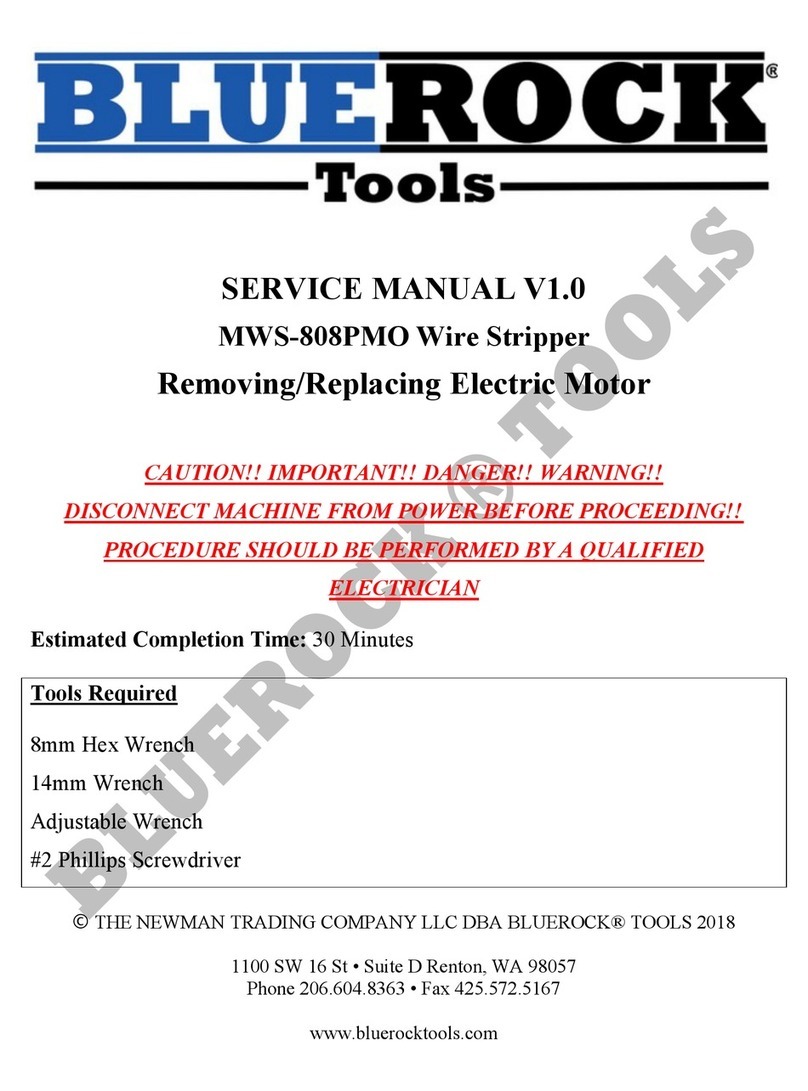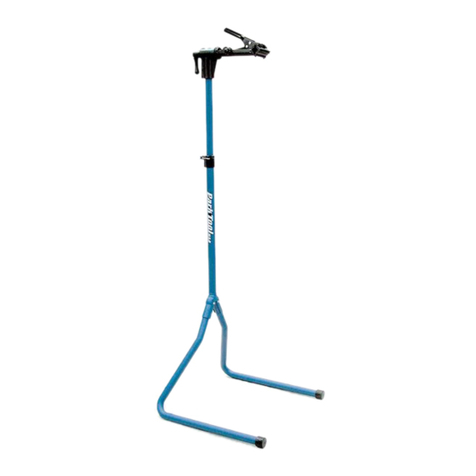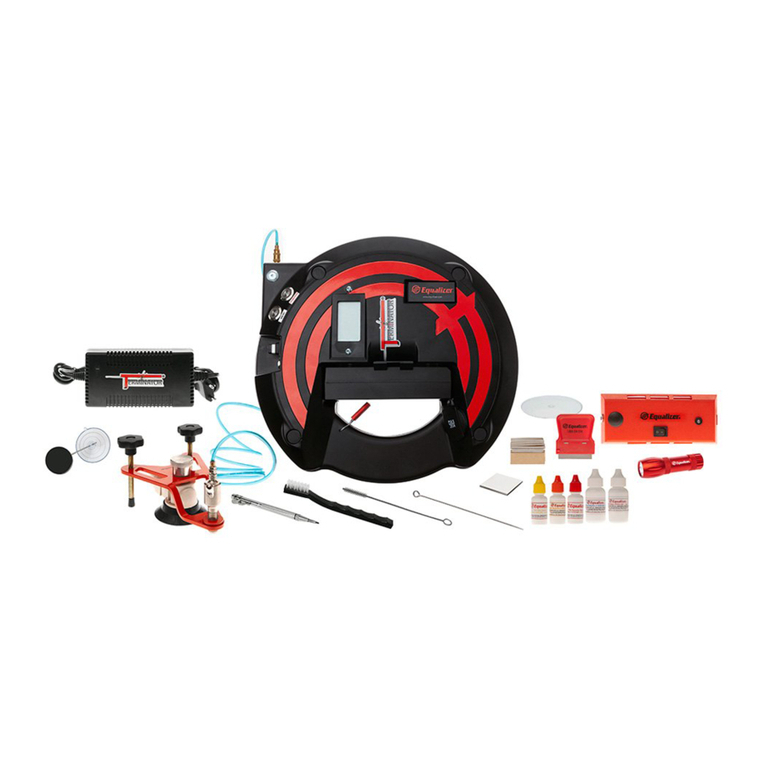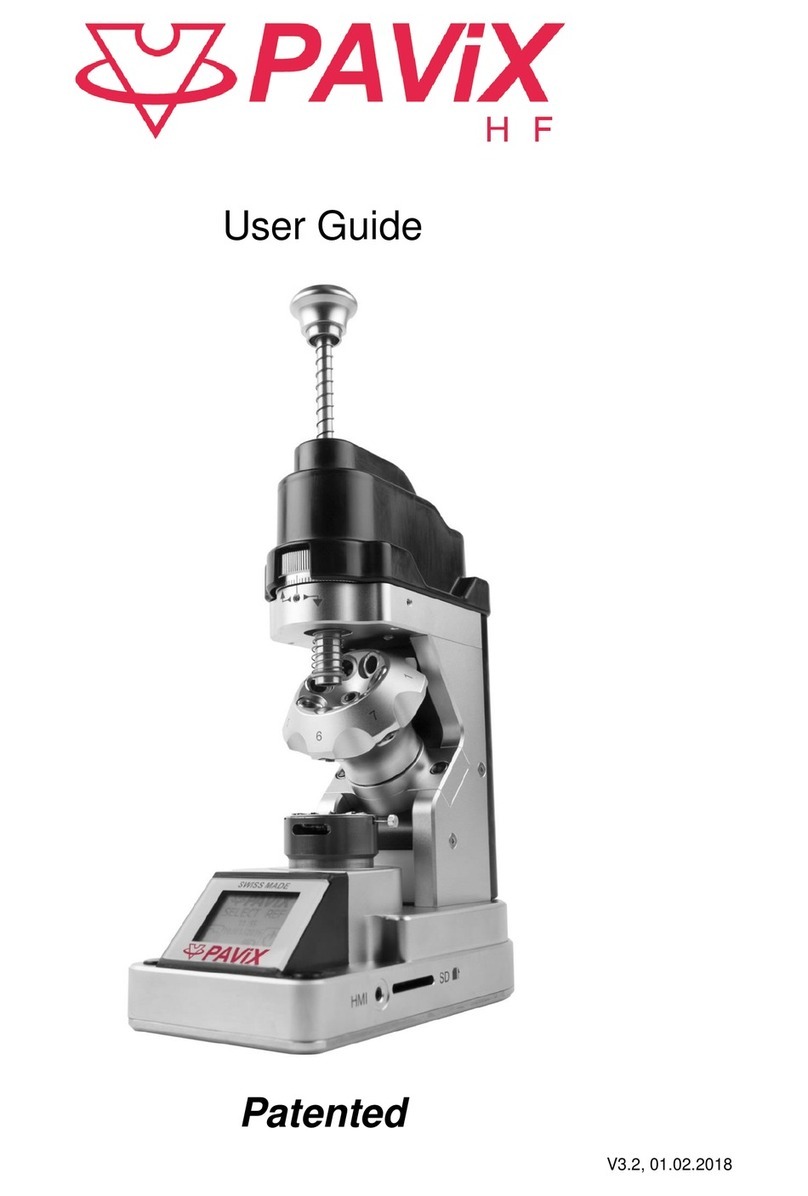Bluerock Tools PTK-300 Quick start guide

OPERATIONAL MANUAL
MODEL: PTK-300 PIPE THREADING KIT FOR PD-
300/PTM-300
by BLUEROCK ® Tools
Volume
1.0

MWS-
PTK-300 PIPE THREADING KIT
UNPACKING THE ITEM
Caution: This machine is packed together with items that may be sharp, oily and overly heavy objects. Remove the machine from
the packaging in a safe manner. Check to ensure all accessories are included with the item while unpacking. If any parts are found
to be missing, contact the retailer as soon as possible. Do not throw away the packaging until the item is out of the guarantee
period. Dispose of the packaging in an environmentally responsible manner. Recycle if possible. Keep all plastic bags away from
children due to risk of suffocation.
WEEE - Waste Electrical & Electronic Equipment. Note this machine should be disposed of as electrical & electronic
waste.
ãTHE NEWMAN TRADING COMPANY LLC DBA BLUEROCK® TOOLS 2021
1033 Andover Park East, Tukwila WA 98188 USA
Phone 206.604.8363 • Fax 425.572.5167
www.bluerocktools.com

PTK-300 PIPE THREADING KIT
Table of Contents
SAFETY' 1!
PRE-OPERATIONAL SAFETY CHECKS! 1!
OPERATIONAL SAFETY CHECKS! 1!
SPECIFICATIONS' 3!
INCLUDED'ACCESSORIES' 3!
ADDITIONAL'AVAILABLE'ACCESSORIES' 3!
ADDITIONAL ACCESSORIES FOR THIS MACHINE CAN BE FOUND IN BLUEROCK ® TOOLS ONLINE SHOP AT
WWW.BLUEROCKTOOLS.COM OR FROM YOUR LOCAL RETAILER.! 3!
OPERATIONS' 4!
MACHINE COMPONENTS! 4!
PURPOSE! 4!
MACHINE SET-UP (IF USING THE OPTIONAL PD-300 POWER DRIVE)! 4!
PREPERATION FOR THREADING WITH THE PTK-300! 5!
RUNNING THE OPTIONAL POWER DRIVE WITH PTK-300 PIPE THREADING KIT! 9!
TROUBLESHOOTING'11!
CORRECTION'11!
GENERAL'MAINTENANCE'12!
PARTS'LIST'13!

PTK-300 PIPE THREADING KIT
1
Safety
DO NOT USE THIS MACHINE UNLESS YOU HAVE READ THE OPERATING INSTRUCTIONS!
Safety glasses must be worn at all times in
work areas. Use a full face mask whenever
possible.
Long and loose hair must be
contained.
Appropriate footwear must be worn.
Close fitting/protective clothing
must be worn.
Read operational manual prior to use.
Hearing protection should be
worn when using this machine.
PRE-OPERATIONAL SAFETY CHECKS
Ø Examine the power cord and plug for damage.
Ø Examine the body of the machine and inspect for damage or defects.
Ø Examine the cutting dies and die head to insure they are operable.
Ø Ensure that the die head and dies are correctly attached to the machine.
Ø Make certain the on/off switch is in the off position before plugging into power to prevent unintentional starting.
OPERATIONAL SAFETY CHECKS
Ø ONLY to be operated by qualified personal who have read instructions.
o NOTE: Failure to read and follow instructions could result in electrical shock, fire, property damage and/or
serious injury!
Ø DO ensure all non-essential people are clear of the immediate work area.
Ø DO stay alert and use common since when using this tool.
Ø DO remove adjusting keys or wrenches prior to turning machine on.
Ø DO guard against electric shock by preventing body contact with grounded surfaces such as pipes, radiators, ranges,
refrigerators, etc.
Ø DO keep the working area clean and brightly illuminated for optimum operational safety.
Ø DO secure machine to bench or stand. Support long heavy pipe with pipe supports. This practice will prevent tipping.
Chapter
1

PTK-300 PIPE THREADING KIT
2
Ø DO operate machine from side with REV/OFF/FOR switch. This eliminates the need to reach over the machine.
Ø DO keep hands away from rotating pipe and fittings. Stop the machine before wiping pipe threads or screwing on
fittings. Allow the machine to come to a complete stop before touching the pipe or machine chucks. This practice will
prevent entanglement and serious injury.
Ø DO tighten the chuck handwheel and engage rear centering device on the pipe BEFORE turning on the machine. This
will prevents oscillation of the pipe.
Ø DO be mindful that power tools can expose an operator to vibrations transmitted through contact with the machine.
Prolonged exposure can lead to medical issues, which should be discussed with a medical professional.
Ø DO NOT wear gloves or loose clothing when operating machine. Keep sleeves and jackets buttoned. Do not reach
across the machine or pipe. Clothing can be caught by the pipe or machine resulting in entanglement and serious
injury.
Ø DO NOT use this machine if the foot switch is broken or missing. Foot switch is a safety device to prevent serious
injury.
Ø DO NOT make adjustments to machine while the machine is running.
Ø DO NOT cut or saw work-pieces by hand while the machine is running
Ø DO NOT use dull cutting dies as the machine is more likely to bind and the user lose control. This can also overload
the motor.
Ø DO NOT use excessively long pieces of pipe in the machine. Keep the machine balanced and stable at all times.
Ø DO NOT leave the machine running when not in use.
Ø DO NOT hold the work piece by hand or using body. Always mechanically clamp or secure work piece.
Ø DO NOT allow liquids or dust to enter the machine’s ventilation system.
Ø DO NOT operate machine outside of machine specifications.
Ø DO NOT touch moving parts while the machine is running as death or dismemberment could occur.
Ø DO NOT remove machine’s panels while machine is connected to a power source. Only to be removed for service by
qualified personal and put back on the machine after service is complete.
Ø DO NOT allow children or untrained personal to operate machine.
Ø DO NOT use this machine in the rain or a wet environment. If using outdoors, make sure the machine is dry.
Ø DO NOT operate in the presence of explosive materials as power tools create sparks which may ignite dust or fumes.
Ø DO NOT use on a pipe that may contain a live electrical wire/circuit.
Ø DO NOT use this machine if the ON/OFF switches are broken.
Ø DO NOT use this machine to make or break fittings. This practice is not an intended use of the machine and can
result in serious injury.
Ø DO NOT operate the machine with covers removed. Exposure to moving parts may result in entanglement and
serious injury.
Ø DO NOT operate this machine on the same work surface where welding is being performed. This could result in
severe damage to the machine or personal injury to the user.
Ø DO NOT operate this machine on a lower voltage as this could limit the motor life and work efficiency.
o NOTE: Use of long small gauge power extension cords can result in decreased voltage. As local voltages
can vary, it may be a good idea to test the voltage at the end of the extension cord to ensure proper voltage
requirements are met. You might also consult an electrician to make sure the length of cord matches up
with the proper wire gauge for this size motor. Make sure to use outdoor cords when operating outdoors.
Use a GFCI circuit if using in wet locations.

PTK-300 PIPE THREADING KIT
3
Specifications
MECHANICAL DATA
Pipe Capacity
½” to 2” Diameter NPT
811A Die Head Size
½”-3/4” One Set 14 Threads/Per Inch
1”-2” One Set 11 Threads/Per Inch
Rockwell Hardness HRC58-62
(Interchangeable with Ridgid® 811A/815A Die Head)
Die Size
HSS NPT (Interchangeable with Ridgid® 811A/815A Dies)
SHIPPING DATA
Shipping Weight
53lbs
Shipping Carton
560mm x 350mm x 300mm
Included Accessories
DESCRIPTION
QTY
Instruction Manual
1
BLUEROCK PTK-300 Pipe
Threading Kit
1
811A Die Head
1
Set of 4: ½”-3/4” Dies
1
Set of 4: 1”-2” Dies
1
Pipe Reamer
1
Pipe Cutter
1
Carriage
1
Additional Available Accessories
Additional accessories for this machine can be found in BLUEROCK ® Tools online shop at
www.bluerocktools.com or from your local retailer.
RIDGID® Marks are trademarks of RIDGID, Inc. and are used for product identification purposes only.
Chapter
2

PTK-300 PIPE THREADING KIT
4
Operations
Note
THOROUGHLY READ THROUGH THE ENTIRE MANUAL BEFORE OPERATING THIS MACHINE!
MACHINE COMPONENTS
Ø The main components of the BLUEROCK PTK-300 Pipe Threading Kit Assembly is the 811A die head, pipe
cutting assembly, and pipe reamer assembly and assembly carriage.
o These components must be not be removed except by a qualified technician. Power must be
disconnected prior to any service.
PURPOSE
Ø The BLUEROCK PTK-300 Pipe Threading Kit Assembly (die head, pipe cutting assembly, and pipe reamer
assembly) is designed to fit on a power drive unit. It will fit on either a BLUEROCK ® PD-300 Power Drive
or a Ridgid ® type 300 power drive.
o The BLUEROCK PD-300 (base power drive unit) is an electric motor-driven machine which
centers and chucks pipe, conduit and rod (bolt stock) and rotates it while threading, cutting and
reaming operations are performed. Forward (clockwise) or Reverse (counterclockwise) rotation
can be selected with the FOR/OFF/REV switch and a foot switch provides ON/OFF control of the
motor.
MACHINE SET-UP (IF USING THE OPTIONAL PD-300 POWER DRIVE)
Ø The PD-300 Power Drive machine is designed to mount securely to the H-300 Tri-Stand.
o CAUTION: This machine should be picked up and moved with at least 2 people
o DO NOT allow the cord or plug to drag along the floor when transporting.
Ø Make certain the set-up work area is dry.
Ø Use barriers to keep non-essential personal away from rotating pipe.
Ø Place machine away from passageways and make certain the operator is able to see all parts of the work-
piece.
Ø DO NOT set-up or modify the machine in a manner that is not intended.
Ø If using pipe extending more than 1 meter from the rear output of the machine chuck, make certain to use a
pipe support. Add multiple supports if necessary, to ensure machine stability.
Chapter
3

PTK-300 PIPE THREADING KIT
5
PREPERATION FOR THREADING WITH THE PTK-300
Ø CAUTION: Before making any adjustments, ensure the main machine switch is in the “off” position.
Ø Installing pipe in power drive
o Chuck operations
§ Check to insure the cutter, reamer and die head is swung to the rear of the carriage.
§ Mark the pipe at the desired length if it is being cut to length
§ Rotate the forward and rear chucks clockwise to open them up and make room for the
pipe.
§ Insert the pipe into the Power Drive so that the end to be worked or the cutting mark is
located about 12 inches to the front of the speed chuck jaws.
§ Insert workpieces less than 2 feet long form the front of the machine. Insert longer pipes
through either end so that the longer section extends out beyond the rear of the Power
Drive.
• CAUTION: Use pipe supports when necessary to prevent machine tipping.
§ To close the chuck around a piece of pipe, turn the chuck handwheel in the counter-
clockwise direction.
• Check the pipe is perfectly centered in the chuck and attempt to spin the
handwheel tight again.
o If the pipe is not centered, reverse the operation until the pipe is
loose and re-center the pipe.
• Secure the pipe by using repeated and forceful counterclockwise spins of the
speed chuck handwheel at the front of the Power Drive. This action
“hammers” the jaws tightly around the pipe.
o NOTE: This prevents movement of the pipe that can result in poor
thread quality.
• CAUTION: Keep hands and fingers away from the chuck jaws when the
machine is plugged into a power source. Closing chuck jaws can cause
serious damage to bodily parts.
Ø Removing pipe from the optional power drive
o Flip directional switch to “off” position.
o Use repeated and forceful clockwise spins of the speed chuck handwheel at the front of the
Power Drive to release the workpiece from the speed chuck jaws.
o If necessary, loosen the rear centering device using a clockwise rotation of the handwheel at the
rear of the Power Drive.
o Slide the workpiece out of the Power Drive, keeping a firm grip on the workpiece as it clears the
Power Drive. To avoid injury from falling parts or equipment tip-overs when handling long
workpieces, make sure that the end farthest from the Power Drive is supported prior to removal.
o Clean up any spills or splatter on the ground surrounding the Power Drive.
Ø Pipe cutter operations
o Check to insure the reamer and die head are in the UP position.
o Securely clamp the pipe into the chuck as described in the above section.

PTK-300 PIPE THREADING KIT
6
o Move pipe cutter down onto pipe and move carriage with carriage lever to line up cutter wheel
with mark on pipe.
o Set the pipe-cutting wheel at the point where the pipe will be cut.
o Open the cutting knife rack so that the rollers are straddling the pipe (see figure below).
o Switch the main on/off switch to the “FOR” (Forward) position. Depress and hold down the foot
switch with the left foot.
o Grasp the pipe cutter’s feed handle with both hands.
o Slowly cut into the pipe by feeding the cutting wheel into the pipe by rotating the handle
clockwise while the pipe is rotating (see figure below).
• DO NOT force the cut, as it will distort the pipe and cause damage to the pipe
cutting assembly.
§ CAUTION: Once the pipe piece is cut, the steel remnant will fall.
o Release the foot switch and remove your foot from the housing.
o Swing pipe cutter back to the UP position.
o
Ø Pipe reamer operations
o Move reamer arm down into reaming position.
o Check the directional switch to insure it is in the FOR (Forward) position. Depress and hold the
foot switch down with the left foot.
o While the pipe is still secured in the chuck, position the center of the reamer tip to be placed
inside the spinning pipe with the right hand (see figure below).
o Gently apply pressure to the outside reamer assembly taking extreme caution with metal
fragments and the spinning pipe.
o Continue until pipe is reamed.
o Retract reamer bar and return reamer to the UP position.
o Release foot switch and remove your foot from the housing.

PTK-300 PIPE THREADING KIT
7
o
Ø Pipe threading operations
o Check to insure the cutter and reamer are to the rear of the carriage
o Ensure pipe is securely fastened in the chuck.
o Always install the correct dies for the die assembly.
o Set die head to proper size.
o Lower die head into threading position.
o Rotate throwout lever to the CLOSED position. Push throwout lever down until the release trigger
cocks.
o Apply Thread Cutting Oil to end of the pipe.
§ NOTE: Apply plenty of thread cutting oil to the dies during threading. Cutting oil is a
necessary part of pipe threading. T
o Assume the correct operating posture.
o Check directional switch to insure it is in the FOR (Forward) position. Depress and hold the foot
switch down with the left foot.
o CAUTION: To avoid serious injury from rotating parts, allow adequate clearance between your
hand and rotating parts when oiling.
o Feed the diehead into contact with the pipe.
§ Apply pressure to the diehead assembly arm until the dies are engaged and start
threading.
§ When thread is completed, raise throwout lever to open position, retracting dies. When
die head trigger contacts end of pipe, throwout lever automatically opens.
§ Release foot switch and remove your foot from the housing.
§ Turn the main on/off switch to the “off” position.
§ Manually push the spanner forward on top of the diehead assembly to release the dies
from the threads.
§ Move carriage lever away from pipe end and return die head to the UP position.
§ Check the thread for length and depth.

PTK-300 PIPE THREADING KIT
8
§ Loosen the chuck handwheels clockwise and remove the pipe from the rear of the
machine. Be careful not to damage the threads.
§
§
Ø Installing Dies in the Diehead (for 811A Diehead that comes with the PTK-300 Pipe Threading Kit)
o CAUTION: Ensure the machine is unplugged.
o Remove the diehead assembly from the sledge.
o Lay die head on bench with numbers face up
o Flip throwout lever to OPEN position (see figure below)
o Loosen clamp lever approximately three turns.
o Lift tongue of clamp lever washer up and out of slot under size bar. Slide throwout lever all the
way to end of slot in the OVER direction indicated on size bar (in direction of CHANGE DIES
arrow on rear of cam plate).
o Remove dies from die head.
o Select the dies that are the correct size for the pipe diameter you are cutting.
o Insert the dies (numbered 1, 2, 3, 4) into the corresponding diehead slots (also numbered 1, 2, 3,
4). See Figure below.

PTK-300 PIPE THREADING KIT
9
o Slide throwout lever back so that tongue of clamp lever washer will drop in slot under size bar.
o Adust die head size bar until the index line on lock screw or link is aligned with proper size mark
on size bar. For bolt threads, align index line with BOLT line on size bar.
o Tighten clamp lever.
o If oversize or undersize threads are required, set the index line in direction of OVER or UNDER
size mark on size bar.
o Place the diehead assembly back in the sledge.
o
o
RUNNING THE OPTIONAL POWER DRIVE WITH PTK-300 Pipe Threading Kit
Ø Do all pre-operational and operational safety checks from Chapter 1.
Ø Consider your security and stability as well as the orientation of the machine in the work area.
o Consider the work surface material, condition, strength, density and rigidity. These factors
directly affect the tools operation and user safety.
Ø Ensure the machine handles are free of grease or oil.
Ø Select appropriate die head and die depth for the specific pipe you are threading.
o Inspect the dies to ensure they are sharp and in the correct position.

PTK-300 PIPE THREADING KIT
10
§ Improperly installed or dull cutting dies can cause binding or poor quality threads.
o To prevent tipping, long lengths of pipe should be supported by a pipe stand.
Ø Plug the machine into power source.
Ø Place pipe in the chuck and secure, evenly tightening the chuck handwheel (see section above for
specifics about using the chuck).
Ø Ensure the machine main power and footswitch are operating correctly.
o Turn the main machine switch to the “on/FOR” position.
o Depress the on/off foot pedal to check the rotation and engagement of the chuck.
o Disengage the foot pedal to ensure the “off” function is working properly.
§ NOTE: Be sure to position the foot pedal in an accessible place.
§ CAUTION: Always allow the pipe to completely stop turning before touching the chuck
handwheel, pipe, die assembly, pipe cutting assembly or pipe reamer assembly.
§ CAUTION: Ensure the main on/off switch is “off” before making adjustments any
adjustments.
Ø Cut the pipe end to ensure a clean edge (see figure above for specifics using the pipe cutter)
Ø Use the pipe reamer to clean the inside edge (see figure above for specifics using the pipe reamer).
Ø Engage the cutting dies with the clean rotating pipe end (see above section for specifics on engaging
cutting dies).
o Apply plenty of thread cutting oil to the dies during threading. This will reduce the and on the
motor and extend the life of motor components and dies.

PTK-300 PIPE THREADING KIT
11
Troubleshooting
Note
SERVICING SHOULD ONLY BE DONE BY A QUALIFIED TECHNICIAN.
DON’T FORGET TO UNPLUG POWER TO UNIT PRIOR TO SERVICE!
PROBLEM
CAUSE
CORRECTION
Motor does not
start (IF USING
OPTIONAL PD-
300)
Threading machine unplugged
Plug into power source
Fuse blown
Replace the fuse
Capacitor blown
Replace capacitor
Bad on/off switch
Replace Switch
The cutting knife
will not cut
Cutting blade is dull
Replace blade
Lead screw on cutting blade assembly is
damaged
Replace assembly
Too much force being applied
Cut slower
Motor sounds
Overloaded (IF
USING
OPTIONAL PD-
300)
Overload because of dull dies
Replace dies
Bad quality or insufficient thread cutting oil
Use thread cutting oil in adequate quantity
Sparks coming
from motor (IF
USING
OPTIONAL PD-
300)
Bad contact between brushes and brush
holder
Tighten the screws, make sure brush is pressed
firmly onto armature
Brushes do not touch armature properly
Replace worn brushes
Sharp edge on brush
Break edge with sand paper
Die head does
not start
threading
Dull or broken dies
Replace dies
Improperly set dies
Reset dies
Damaged
Thread
Dull dies
Replace dies
Dies not assembled in correct sequence
Put dies in correct sequence
Low quality pipe
Make sure only pipe of good quality is used
Bad quality or insufficient thread cutting oil
Use only thread cutting oil in adequate quantity
Chuck jaws are not tightening enough
Inspect chuck jaws
Pipe turns while
threading
3-jaw chuck not tight
Tighten handwheel chuck
3-jaw chuck teeth dirty
Clean with wire brush
3 jaw chuck teeth damaged or dull
Replace 3-jaw chuck
Chapter
4

PTK-300 PIPE THREADING KIT
12
General Maintenance
Note
SERVICING SHOULD ONLY BE DONE BY A QUALIFIED TECHNICIAN.
DON’T FORGET TO UNPLUG POWER TO UNIT PRIOR TO SERVICE!
Ø Inspect electrical cords and electrical connections if using optional PD-300 power drive.
Ø Keep machine clean and free of debris.
Ø Check for misalignment, binding and breakage of all moving parts. If damaged, repair tool before use.
Ø Check the cutting blade on the pipe cutting assembly.
Ø Clean dies and inspect for chips. Also check the sharpness on the dies. If they are dull or broken, replace ALL dies
with identical set.
Ø Clean chuck teeth with wire brush if using optional PD-300 power drive. Check the attrition of the claw points on the
3-jaw chuck. If the points are worn, replace with identical piece.
Ø Proper lubrication is essential to trouble-free operation and long life of the optional PD-300 Power Drive. Grease
main shaft bearings every 2 to 6 months depending upon amount of Power Drive use. Grease fittings are provided
on side base, one at each end of shaft. Use a good grade of cup grease.
Ø After each use coat all working surfaces with corrosion resistant oil.
Ø Check brushes for wear and replace if worn if using optional PD-300 power drive.
Chapter
5

PTK-300 PIPE THREADING KIT
13
Parts List
PTK-300 811A Diehead (425/811A - 37400)
S/N
new Ref. No.
Ridgid Ref.
Description
1
50103153
32205
Screw UNC1/4-20x5/8
2
40303028
97020
Retaining Ring
3
40901028
46520
Throw-Out Lever
4
40401013
39860
Lock Screw
5
41802013
39950
Link
Chapter
6

PTK-300 PIPE THREADING KIT
14
6
41001008
26957
Lever Washer
7
40901027
39970
Clamp Lever
8
30108019
59832
Post Component
9
40303027
40922
Head w/post
40957
10
40303026
43360
Cam Plate
PTK-300 Pipe Reamer (524 - 37500)
S/N
new Ref. No.
Ridgid Ref.
Description
1
40402007
47155
Pin (2)
2
41701007
43790
Reamer Bar
3
50702003
44700
Latch Spring 1x6.5x3012.5
4
41001009
46665
Reamer Latch
5
42001016
47065
Hinge Pin
6
41801009
46585
Reamer Knob

PTK-300 PIPE THREADING KIT
15
7
50103154
46515
Screw UNC1/4-20x3/4
8
40304017
43230
Reamer Arm
9
40602006
36277
Cone
10701004
42365
Reamer complete
PTK-300 Pipe Cutter (624 - 37600)
S/N
new Ref. No.
Ridgid Ref.
Description
1
30104004
43625
Handle Component
2
41801010
Support Pillar
3
40304019
43595
Cutter Frame
4
42001017
45505
Support Arm

PTK-300 PIPE THREADING KIT
16
5
40402009
45520
Pin
6
40402008
45435
Retaining Pin
7
40601003
33105
Cutting Wheel H.D.
40601008
44185
Cutting Wheel Std.
8
50705005
Cutter Shaft Ring Φ1.4x9
9
42001018
34780
Wheel pin
10
40403029
34305
Roll (2)
11
50705006
Ring Φ1.4x10 (2)
12
42001019
34310
Roll pin (2)
13
40304018
33400
Roll Housing Assembly
10801003
42370
Cutter complete
PTK-300 Carriage (10401006 - 227 - 37800
)

PTK-300 PIPE THREADING KIT
17
S/N
new Ref. No.
RIDGID Ref.
Description
1
41502021
44525
Spring ring (2)
2
41502020
44720
Snap Ring (2)
3
41502022
4
50103174
46050
Screw UNF1/4-28x1/4 (2)
5
30108016
44725
Ring Assembly (2)
6
41703009
44425
Support bar(2)
7
30109026
Carriage Assembly (7+21)
8
40401014
46220
Thumb Screw
9
41502019
Collar
10
40401015
46210
Shoulder bolt
11
30108017
46215
Collar Assembly (2)
12
50402004
46810
Detent assembly
13
50702005
14
50103187
15
40401016
46205
Eye Blot assembly
16
41902001
46235
Hand Grip
30104006
42385
Lever Assembly
17
30104005
43400
Lever arm
18
50102032
Nut UNC5/16-18
19
50702006
Adjusting Compression Spring 2x14x16x45
20
50103169
Adjusting Screw UNC5/16-18x18
21
30108018
45515
Stop bolt assembly
Table of contents
Other Bluerock Tools Tools manuals
Popular Tools manuals by other brands

parktool
parktool DT-3 instructions

FLORABEST
FLORABEST 280270 instructions
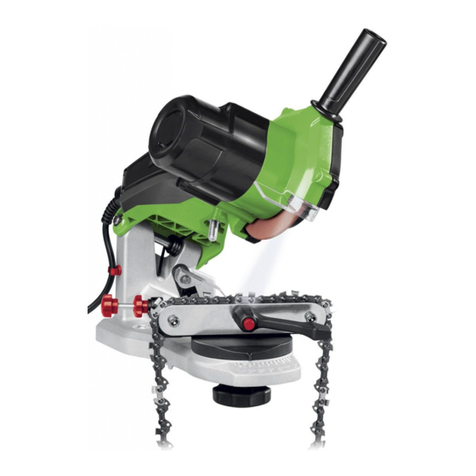
FLORABEST
FLORABEST FSG 85 D1 Translation of the original instructions

PROPOINT
PROPOINT Pistol-Grip Grease Gun instructions
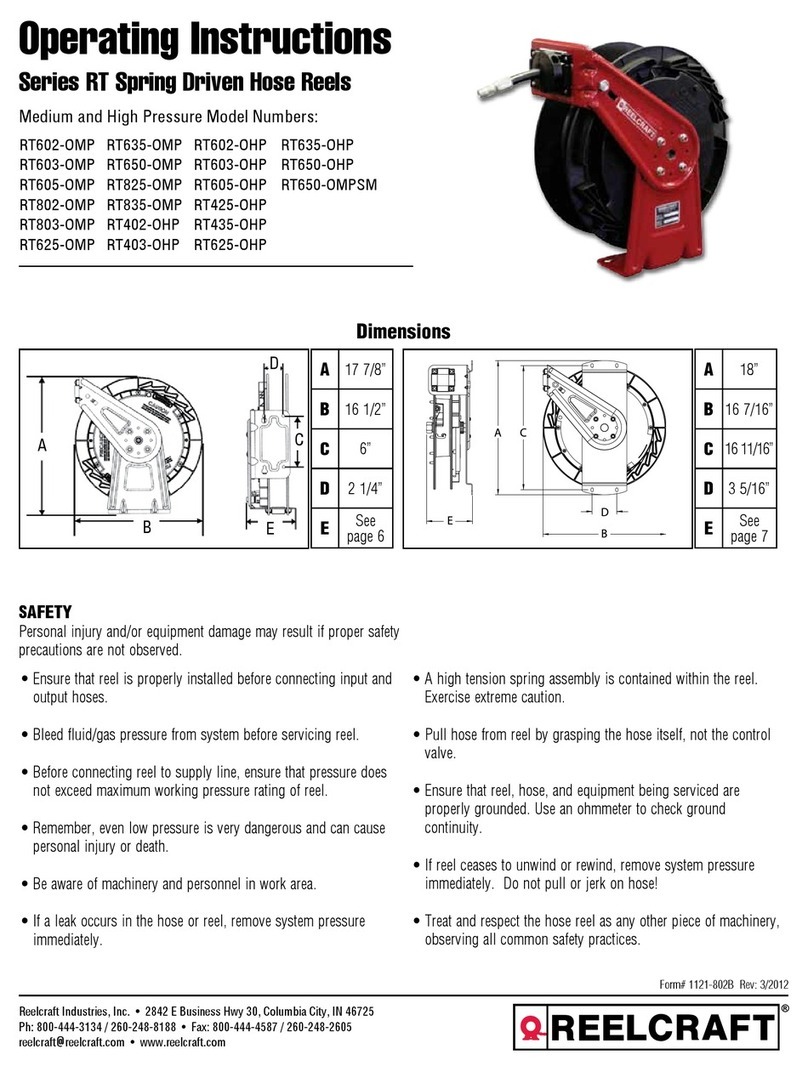
Reelcraft Industries, Inc.
Reelcraft Industries, Inc. RT635-OMP operating instructions
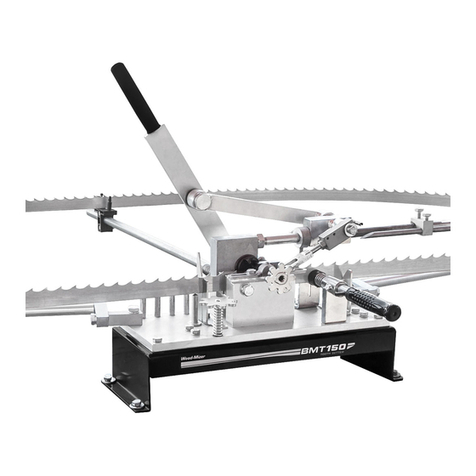
woodmizer
woodmizer BMT150 Safety, Operation, Parts & Maintenance Manual
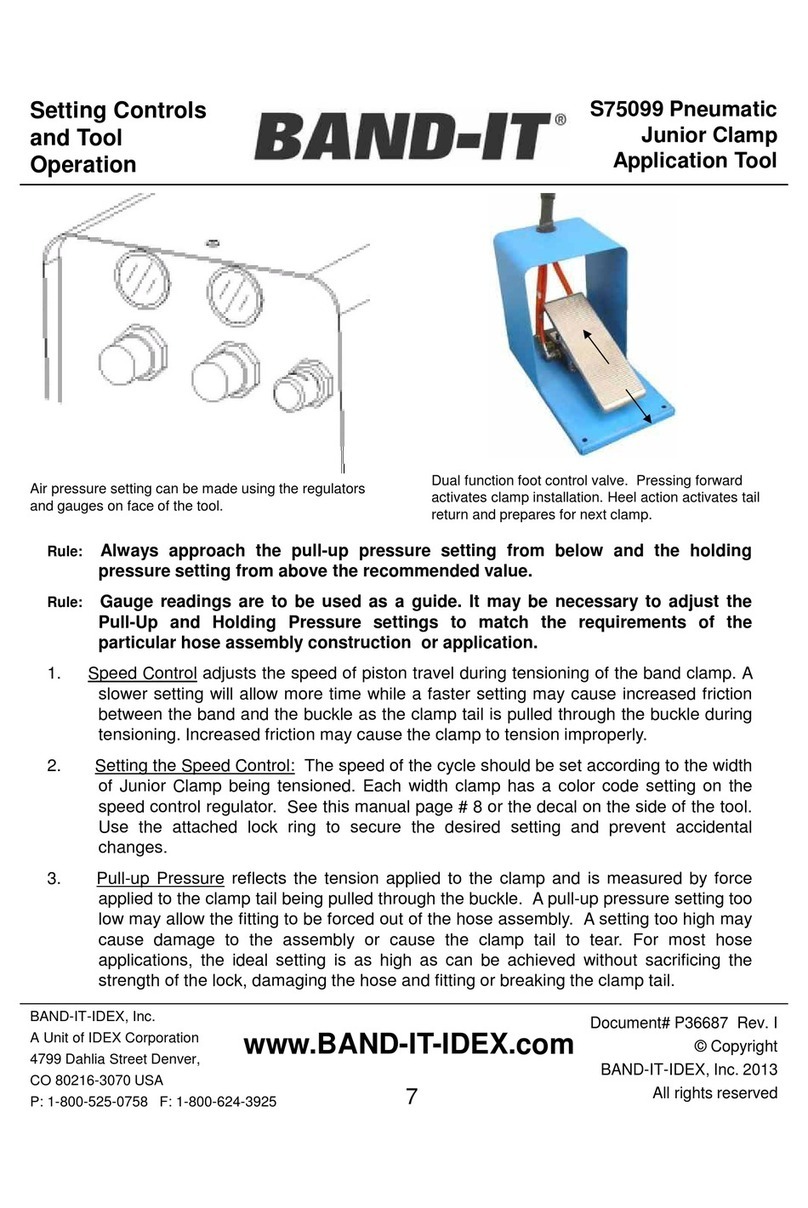
Band-it
Band-it S75099 quick start guide
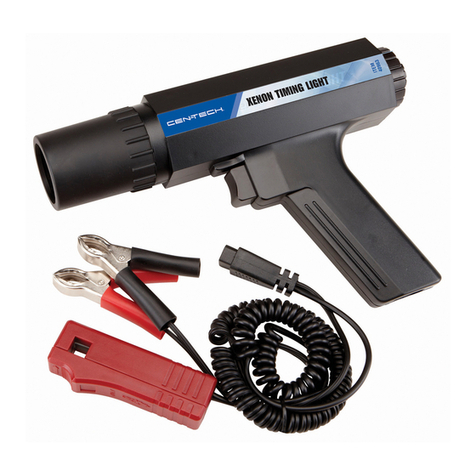
Centech
Centech 40963 Set up and operating instructions
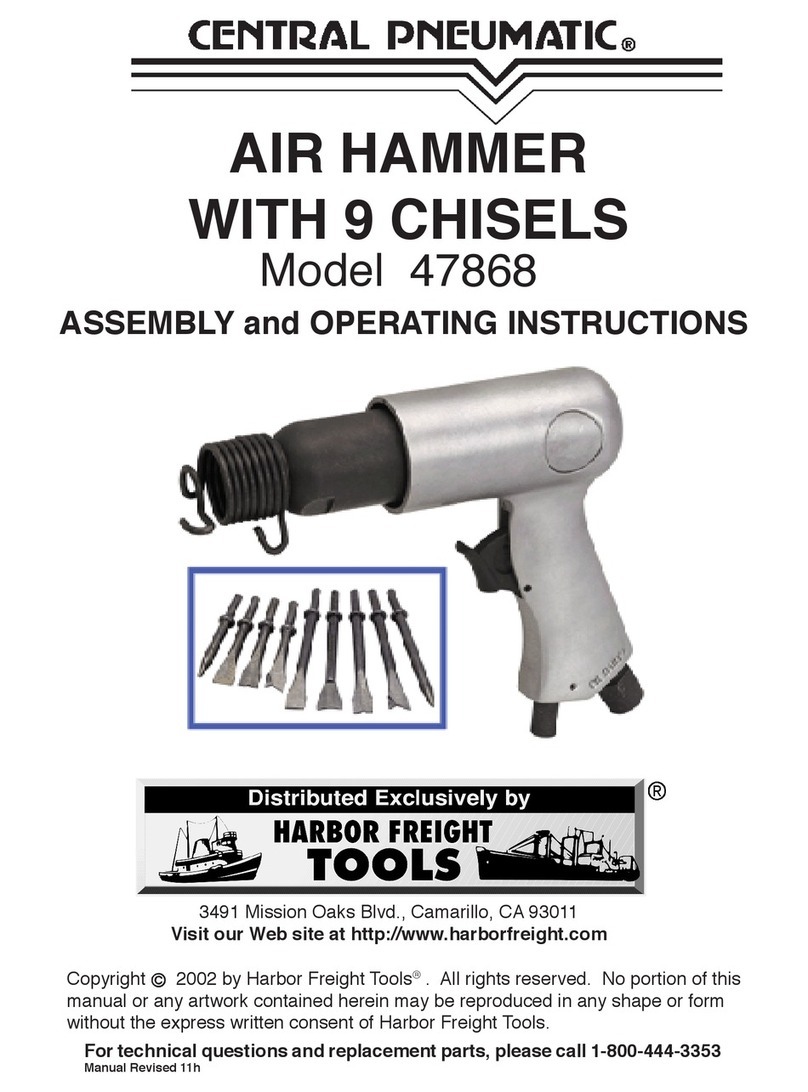
Central Pneumatic
Central Pneumatic 47868 Assembly and operating instructions
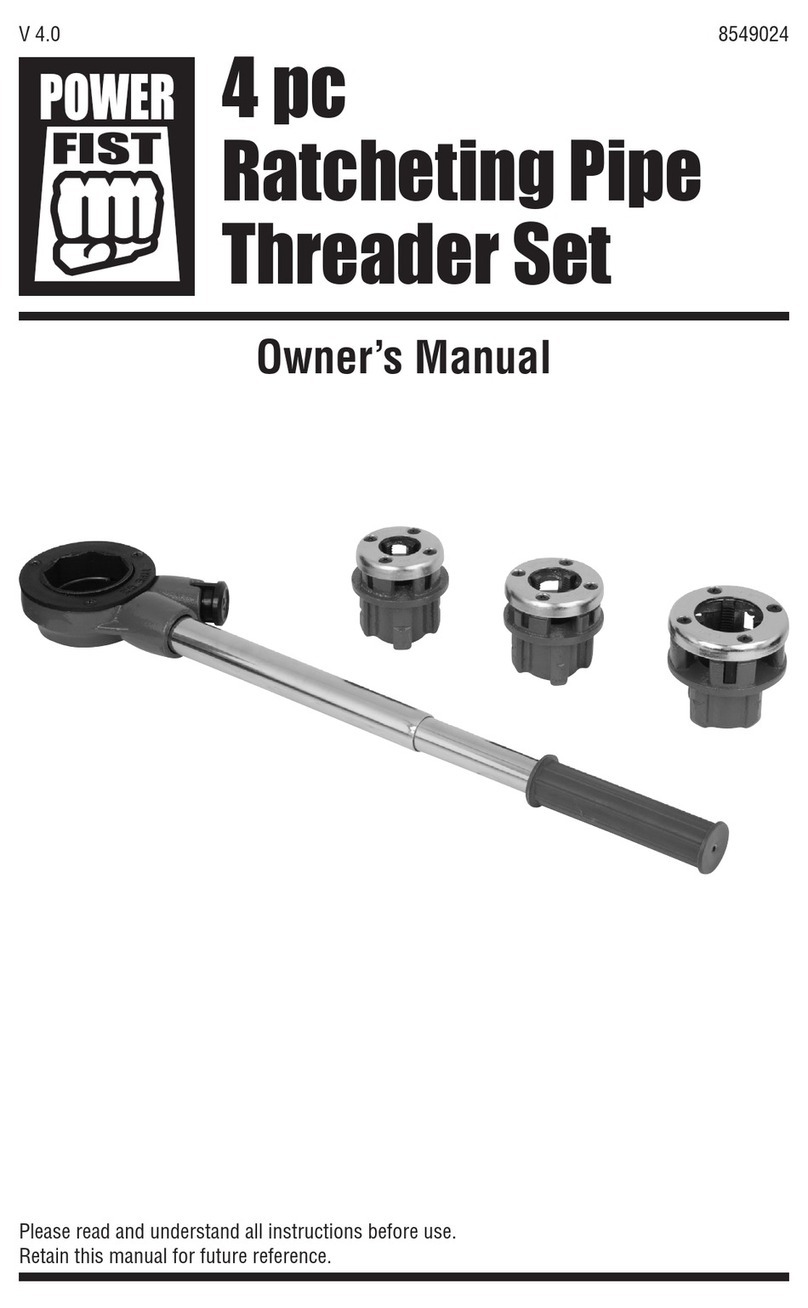
Power Fist
Power Fist 8549024 owner's manual
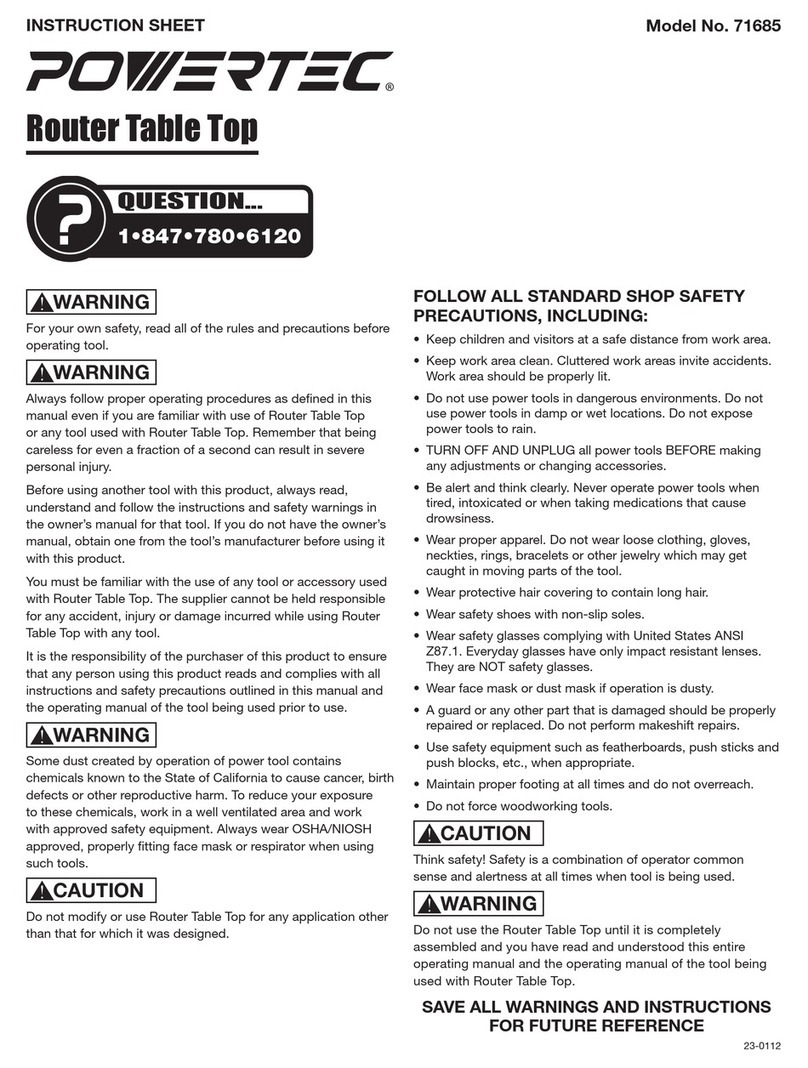
Power Tec
Power Tec 71685 instruction sheet
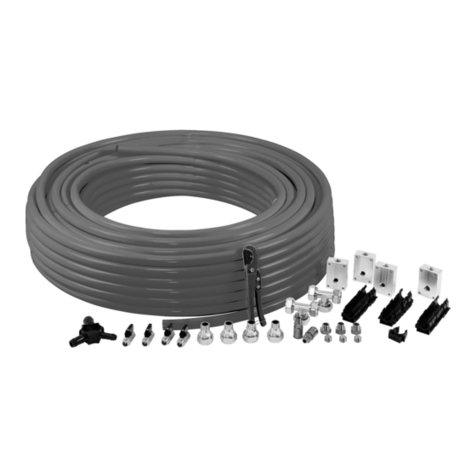
Power Fist
Power Fist Air Line Delivery Kit manual

